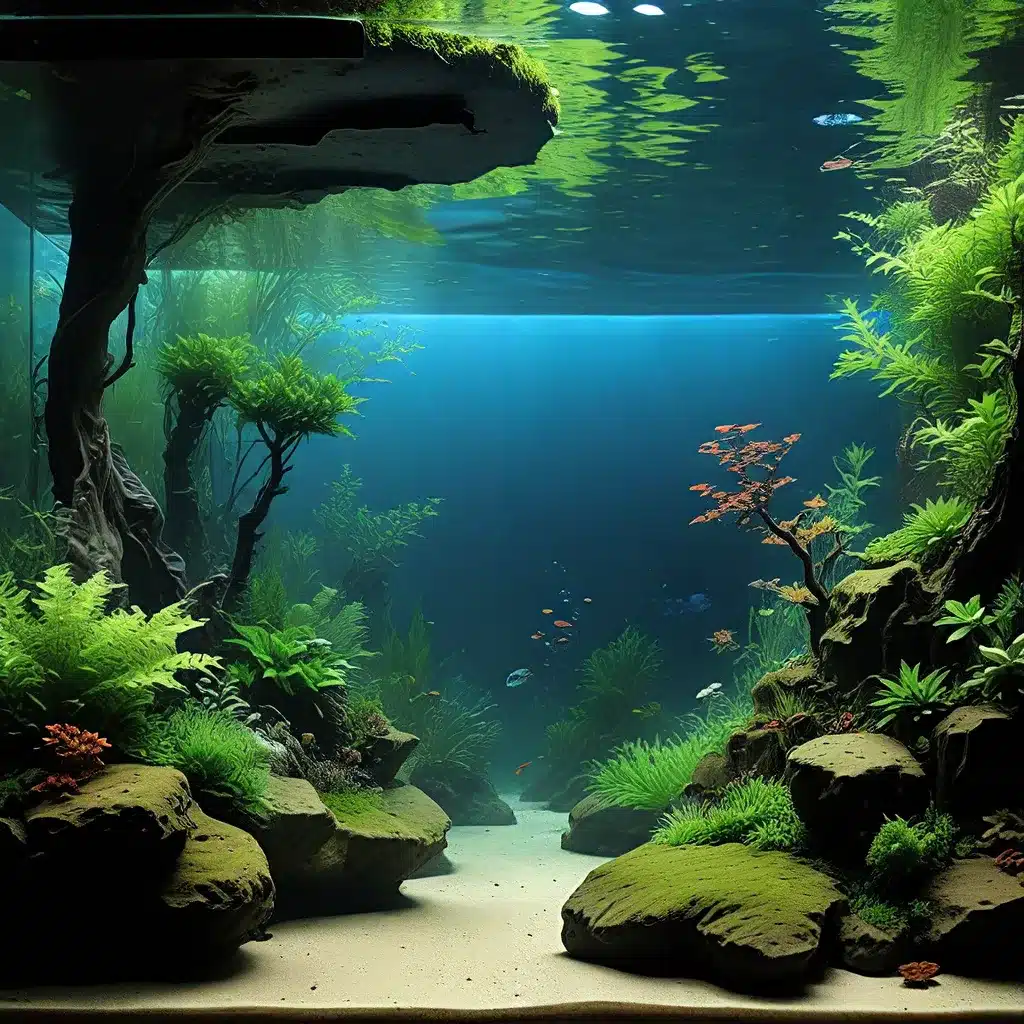
Aquarium enthusiasts know that aquascaping is not merely about arranging plants and rocks – it is an art form that elevates underwater landscapes to breathtaking heights. In this comprehensive guide, we will delve into the significance of aquascaping in aquarium design, catering to those seeking visually appealing underwater environments. We will explore the principles, techniques, and popular styles of aquascaping, guiding you through the process of creating your own aquatic masterpiece.
Balancing Harmony in Design
Achieving a natural and harmonious look in your aquascape is crucial. Balancing hardscape elements, such as rocks and driftwood, with softscape plants ensures that your aquarium mimics a slice of nature. Striking the perfect balance by thoughtfully placing plants and hardscaping components, avoiding overcrowding, and maintaining a sense of openness in the underwater environment are key to crafting a visually stunning aquascape.
Captivating Focal Points
A captivating focal point draws the viewer’s attention and adds depth to the aquascape. Select eye-catching elements, such as a striking rock formation or a unique piece of driftwood, to serve as the centerpiece. However, it’s important to strike a balance, as an overpowering focal point can disrupt the overall harmony of the aquarium.
Exploring Aquascaping Styles
The world of aquascaping offers a diverse range of styles, each with its own unique appeal and considerations. Let’s delve into some of the popular aquascaping approaches:
Dutch Style: Lush and Vibrant Underwater Gardens
The Dutch aquascaping style is characterized by lush, colorful, and densely planted aquariums. To achieve this style, layer plants of various heights and colors, creating an illusion of depth and richness. Skillful use of different plant shapes and sizes enhances the overall visual impact of the aquarium.
Nature Style: Emulating Natural Aquatic Environments
Nature-style aquascapes replicate the serene beauty of natural aquatic environments, such as riverbanks and rocky shores. To capture this look, incorporate driftwood and rocks strategically, imitating the natural arrangement found in nature. Carefully selected plants that resemble those in natural habitats contribute to the authenticity of the aquascape.
Iwagumi Style: Minimalistic and Serene Aquascapes
The Iwagumi style emphasizes simplicity and elegance in design. Mastering the art of stone arrangement and minimal planting creates a serene and visually striking aquascape. Take inspiration from famous Iwagumi-style aquascapes to embark on your creative journey.
Aquascape Design Elements
Crafting a visually stunning aquascape requires a thoughtful approach to the various design elements. Let’s explore how to utilize these elements to elevate your underwater habitat.
Foreground Plants: Adding Depth to the Aquarium
Foreground plants create a sense of depth, making the aquarium appear larger and more captivating. Opt for low-growing plants for the front of the tank, ensuring they do not overshadow the background elements.
Midground Plants: Creating Depth and Perspective
Midground plants play a pivotal role in creating a three-dimensional effect in the aquarium. Select mid-sized plants that complement the foreground and background, guiding the viewer’s gaze towards the focal points.
Rocks: Enhancing Aesthetics and Structure
Rocks are not only decorative but also serve as anchor points for plants. Choose from a variety of rocks, such as lava rock or seiryu stone, to add texture and character to the aquascape. Skillfully arranging rocks creates a natural and appealing appearance.
Driftwood: Adding an Authentic Touch
Driftwood adds a touch of authenticity to the aquarium, mimicking the look of natural aquatic environments. Before introducing driftwood, ensure proper preparation to avoid any leaching substances that may harm aquatic life. Carefully incorporate driftwood into the aquascape design to create a seamless and natural look.
Substrate Selection and Layering
The choice of substrate significantly impacts plant growth and the overall health of the aquarium. Gravel, sand, and planted substrates each offer unique advantages and considerations. Selecting the appropriate substrate based on your aquascape’s desired aesthetics and the specific needs of your plant species is crucial.
Layering substrate provides stability for the hardscaping elements and anchors plants in the aquarium. Employing specific techniques for substrate layering helps create a visually appealing and stable environment for aquatic life.
Lighting and CO2 Injection
Selecting the right lighting is essential for optimal plant growth and the overall vibrancy of the aquascape. Consider the light requirements of your chosen plant species and establish a lighting schedule that promotes their health and growth.
Supplementing CO2 can significantly enhance plant health and growth. Proper dosing and monitoring techniques are crucial to maintaining a healthy balance, ensuring that plants thrive without negatively affecting other aquatic life.
Maintaining a Thriving Aquascape
Aquascaping doesn’t end with the initial setup. Maintaining a thriving underwater habitat requires ongoing attention and care. Identifying and addressing common algae issues, along with introducing algae-eating aquatic species, offers a natural and effective means of control.
Balancing fertilization and nutrient levels is vital to ensure that plants flourish without causing nutrient imbalances that encourage algae growth. Regular pruning and trimming help maintain plant health and promote lush growth.
Exploring Biotope Aquascapes
Biotope aquascapes take aquascaping to a whole new level by recreating specific regions and habitats found in nature. Offering a glimpse into the diverse aquatic environments across the globe, creating a microcosm of a natural ecosystem brings authenticity and educational value to the aquascape.
Aquascaping: An Artistic Journey
Aquascaping is not just a hobby; it is an art that allows aquarium enthusiasts to create mesmerizing underwater landscapes. By understanding the principles, techniques, and popular styles of aquascaping, you can craft a breathtaking aquascape that brings joy and serenity to both you and your aquatic inhabitants.
Embrace creativity, explore new possibilities, and dive into the beauty of underwater landscapes as you embark on an exciting and fulfilling aquascaping adventure. Your aquatic oasis awaits. Happy aquascaping!

